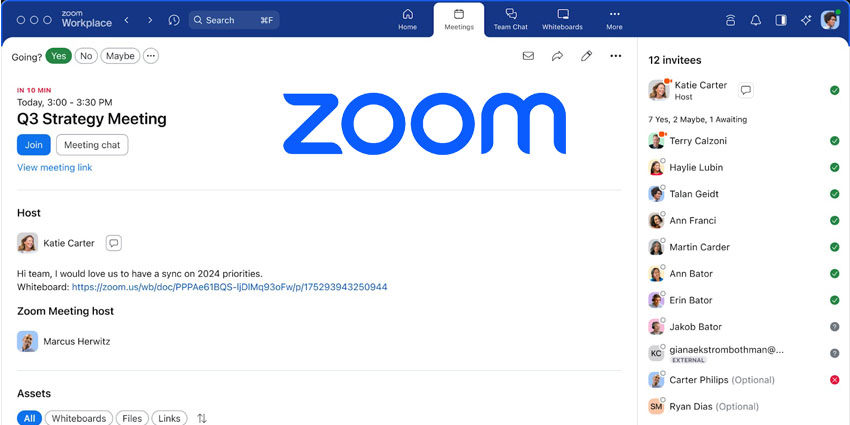Even though video has been an integral part of remote cooperation, it is often incapable of supporting training, socializing, and other situations that demand a higher degree of immersion and involvement. Fortunately, virtual reality (VR)-based collaboration solutions bypass a significant portion of these obstacles, which has increased their use throughout the epidemic.
Due partly to the pandemic, experts predict that the market for VR headsets will grow about eightfold between 2021 and 2025. In addition, 92 percent of HR experts questioned in recent research considered immersive technology as a crucial tool for post-pandemic recovery. VR has a significant part to play in cooperation and training due to the following benefits:
Making it easier to work with 3D rendition of objects
Collaboration based on virtual reality and 3D modeling is a perfect match. Additionally, companies may include digital resources such as collaborative papers and models in the VR conference. This is particularly important for the construction, manufacturing, and product design industries. Virtual reality collaboration platforms may make meetings more visually engaging and activity-oriented. Colleagues who come together in a shared virtual area may present and evaluate 3D models.
Instantaneous changes to the VR meeting may be made in real-time. This may substantially enhance and expedite prototyping, bringing ideas to digital life and enabling colleagues from diverse departments to inspect every element with great care.
Minimize business travel and carbon footprint
Immersive, 3D experiences may unleash other advantages for VR-powered enterprises beyond collaboration. When geographically dispersed teams can work in the same room, businesses save money on travel expenditures and environmental costs. Additionally, meetings may have a smaller carbon footprint. This is especially true for companies transporting heavy equipment and demanding personal interactions.
Multiphoton Optics, a manufacturer of 3D printing machines, formerly traveled to trade events with a 3D printer, paying substantial fees. It substituted the device with a VR headset, allowing prospective customers to engage with the equipment virtually. This decreased its carbon impact by 98.5 percent, from 96.1 tons of CO2 per round trip to 1.4 tons.
Augment the effects of learning
Virtual reality for cooperation enables businesses to provide engaging and hands-on training, which benefits both the individual and the company. According to Professor Edgar Dale’s Cone of Experience, workers recall 10 percent of what they study, 20 percent of what they listen to, and 90 percent of what they do. VR enables trainees to practice and use their abilities in a virtual world and is thus likely to improve retention of information, performance, safety, and efficiency.
Modern VR training platforms allow companies to execute training scenarios via a centralized system for employees worldwide. It is feasible to manage several users and monitor real-time training data and actionable insights.
Ensuring engagement without falling into the “disconnect” trap
Presence is the sensation that a person is present in front of you. The natural mental and bodily connection happens during genuine social interactions.
The natural mental and bodily connection happens during genuine social interaction.
Typically, physical presence exists outside of the digital environment. Users cannot sense presence during a Zoom conference, even when they know someone is physically there inside the Zoom window. A modest, two-dimensional visual depiction of a person does not have the same neurological consequences.
This is the remarkable difference made by virtual reality.
VR collaboration enables remote presence; it seems you are in the same physical place as other participants in your virtual area, both emotionally and cognitively. Incorporating the third dimension into virtual meetings generates the emotional and mental illusion of being in the same physical place as the others with whom you digitally meet and interact. Consequently, VR meetings may seem just as energizing and interesting as meetings in the real world.
Improve collaboration at the beginning of the employee lifecycle
To date, telephonic and in-person screenings have been the most common methods for interviewing prospective candidates. Using VR, the interview experience can be enhanced to include realistic simulations of the responsibilities of the open position and the company’s work. From the employer’s standpoint, “what-if” scenarios might be used to determine how a candidate would respond to events they are likely to face in the role.
Strengthen team dynamics and focus
Virtual reality collaboration helps make remote sessions and collaborative tasks far more meaningful than traditional techniques such as video. VR promotes numerous and concurrent communication. This more closely resembles the usual “office setting” Multiple meetings may be held concurrently inside a VR software, making VR meetings far more cost-effective.
Moreover, as previously said, workers are literally “present physically” during a VR session. Using body language and motion, gestures, and facial movements, they communicate with people while analyzing digital information – all in VR. Therefore, it is less likely that employees will become distracted during VR meetings.
Run collaborative experiments at low costs
Lastly, cooperation based on VR allows researchers to develop experimental scenarios without the constraints of the actual world. It generates controlled and reproducible conditions without the expense required to tweak or modify studies in the real world. VR research tools allow stakeholders in various fields – including healthcare, travel, energy, retail, psychology, military, biology, and oceanology – to collaborate and develop innovative solutions.
From employee training to data analytics and collaboration, many firms realize the value of virtual reality (VR) technology in the workplace. However, we are only just beginning to explore the possibilities of this game-changing technology. The next stage is the Metaverse, which might host entire workplaces in virtual reality (VR) spatial environment connected via a decentralized internet.







